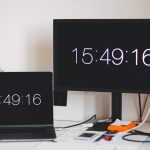The Power of Deleting Old Photos and Screenshots (my Digital Declutter)
In an age where our lives are increasingly lived through screens, the accumulation of digital artifacts is inevitable. Every day, we capture moments, save information, and collect digital souvenirs, often without a second thought. Our phone galleries swell, our desktop folders overflow, and our cloud storage groans under the weight of countless photos and screenshots. For a long time, I was a prime example of this digital hoarder. My phone was a graveyard of blurry memories, duplicate selfies, forgotten memes, and screenshots of recipes I’d never cooked. But then, I discovered the profound, transformative power of deleting old photos and screenshots – my very own digital declutter. It wasn’t just about freeing up space; it was about reclaiming mental bandwidth, boosting device performance, and creating a more intentional digital existence.
Beyond Storage: The Mental Liberation of Letting Go
The most immediate and tangible benefit of deleting old photos and screenshots might seem to be the freed-up storage space. While undoubtedly true, the deeper impact lies in the mental liberation it offers. Our digital devices are extensions of our minds, and a cluttered digital space can mirror a cluttered mental one. Each unneeded photo, every forgotten screenshot, represents a tiny, unresolved piece of information vying for our subconscious attention. Think of it as cognitive overhead – the silent processing power your brain expends just knowing that digital mess exists. The sheer volume can be paralyzing, leading to a sense of overwhelm every time you scroll through your gallery or search for a specific image.
The Weight of Digital Remnants on Our Minds
For me, the realization hit hardest when I was trying to find a specific photo from a recent vacation. I had to scroll through thousands of images: blurry shots of my feet, multiple angles of the same meal, screenshots of texts, receipts, and random internet finds. It wasn’t just annoying; it was mentally exhausting. This constant visual noise contributes to decision fatigue and a general feeling of disorganization in my daily life. Deleting these digital remnants felt like clearing cobwebs from my brain. It allowed for clearer thought, reduced anxiety, and a genuine feeling of lightness. It’s not just about what you keep, but what you choose to release, creating space for what truly matters.
Unmasking the Hidden Costs of Digital Hoarding
The accumulation of digital junk comes with a price tag far beyond mere gigabytes. Beyond the mental strain, there are concrete, often overlooked costs associated with endlessly hoarding old photos and screenshots. These costs manifest in various ways, impacting everything from your device’s efficiency to your personal privacy and even your ability to truly appreciate your digital memories.
The Performance Drain on Your Devices
Have you ever noticed your phone slowing down, apps crashing, or the camera taking ages to load? A significant culprit is often a full storage drive. Every photo, every screenshot, takes up space, and when that space becomes scarce, your operating system struggles. It has less room to maneuver temporary files, less memory for app processes, and generally works harder to manage the data it has. This translates directly into a sluggish user experience, shorter battery life, and frustration. My phone felt like a new device after I purged thousands of old files – apps opened faster, photos saved instantly, and the overall responsiveness was dramatically improved. It’s a simple equation: less digital baggage equals better performance.
Privacy Risks and Security Vulnerabilities
Another often-ignored cost is the potential privacy and security risk. Many screenshots contain sensitive information: banking details, personal conversations, addresses, passwords (even if you think you’ve deleted them from the main app, they might linger as a screenshot). Old photos, especially those taken years ago, might contain metadata that reveals locations or people you no longer wish to be publicly associated with. The more data you store, the larger your digital footprint, and the more vulnerable you become to data breaches or unauthorized access. Regularly reviewing and deleting unnecessary files is a crucial step in maintaining good digital privacy and security hygiene. It reduces the surface area of your personal data available to potential threats.

My Journey from Digital Chaos to Clarity: A Step-by-Step Purge
Embarking on my digital declutter wasn’t a one-time event; it was a process, a journey that unfolded in stages. It started with a realization of the problem and progressed through methodical steps that eventually led to a much clearer, more manageable digital life. I didn’t tackle everything at once, which would have been overwhelming. Instead, I broke it down into smaller, achievable tasks.
Confronting the Photo Gallery Beast
My photo gallery was the biggest offender. I started by tackling specific categories. First, I went after all the duplicates. Many phones now have features to identify these, but a manual sweep is often more thorough. Then, I focused on blurry photos, screenshots of ephemeral content (like Instagram stories or Snapchat messages), and photos I’d taken by accident. I adopted a simple rule: if it doesn’t evoke a genuine memory, serve a practical purpose, or hold artistic value, it goes. This was a ruthless but necessary step. It was also surprisingly therapeutic to swipe left on hundreds of redundant images. I also made sure to consider the official guidelines for data retention for any important documents I might have screenshotted.
Systematizing the Screenshot Sweep
Screenshots were a different beast. They often served a temporary purpose: a shopping list, a quick note, a funny meme to share, a recipe. The problem was, they rarely got deleted after their purpose was served. I created a dedicated “Screenshots to Review” album and scheduled a weekly 15-minute session to go through it. Anything that was still relevant got moved to a proper folder (e.g., “Recipes,” “Travel Plans”), and everything else was immediately deleted. This routine transformed my screenshot folder from a chaotic dumping ground into a temporary holding pen, ensuring that only purposeful images survived.
Strategic Sweeping: A Blueprint for Sustainable Digital Decluttering
Achieving a significant digital declutter is one thing; maintaining it is another. My experience taught me that a strategic approach, coupled with consistent habits, is key to preventing the digital clutter from creeping back. It’s about building a sustainable system that keeps your digital space clean and functional.
Developing a “Digital Triage” Mindset
The core of sustainable decluttering is developing a “digital triage” mindset. When you take a photo or screenshot, immediately ask yourself: “Do I truly need this? For how long?” If it’s for a very short-term purpose (e.g., remembering a parking spot), make a mental note to delete it within the hour or day. If it’s something to save, immediately categorize it. This proactive approach significantly reduces the backlog. I also learned to be more discerning about what I capture in the first place. Not every moment needs to be photographed, and not every piece of information needs a screenshot. Sometimes, a quick note or simply remembering is enough.
Leveraging Cloud and Backup Solutions Wisely
While the goal is to delete, there’s a place for smart organization and backup. For truly precious photos and important documents, a robust digital backup strategy is essential. Cloud services like Google Photos, iCloud, or Dropbox can be powerful tools, but they shouldn’t be used as indiscriminate dumping grounds. Curate your cloud storage just as meticulously as your device storage. Only upload the best, most meaningful photos. Delete duplicates and low-quality images from the cloud as well. This ensures that your backups are efficient, easy to navigate, and don’t simply replicate the clutter you’re trying to escape. Consider an external hard drive for a secondary, offline backup of your most cherished memories.
Reclaiming Your Digital Space: Performance and Privacy Wins
The tangible benefits of deleting old photos and screenshots extend far beyond a momentary feeling of relief. They translate into concrete improvements in how your devices operate and how secure your personal data remains. This reclamation of digital space is a powerful act of self-care in an increasingly digital world.
The Joy of a Snappy, Responsive Device
One of the most immediate and satisfying rewards of my digital declutter was the noticeable improvement in my phone’s performance. Apps launched faster, the camera was ready


